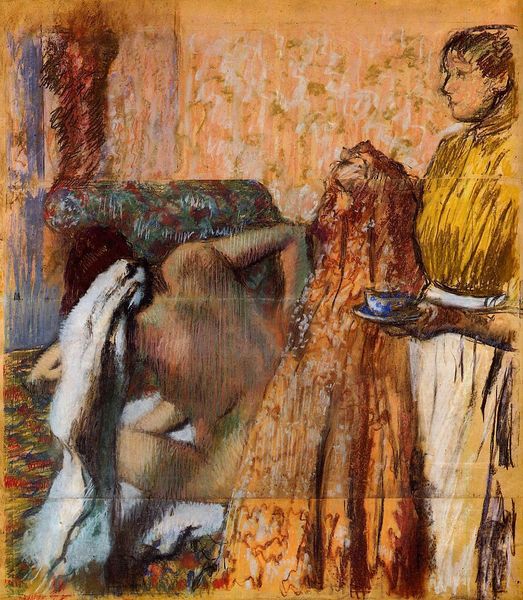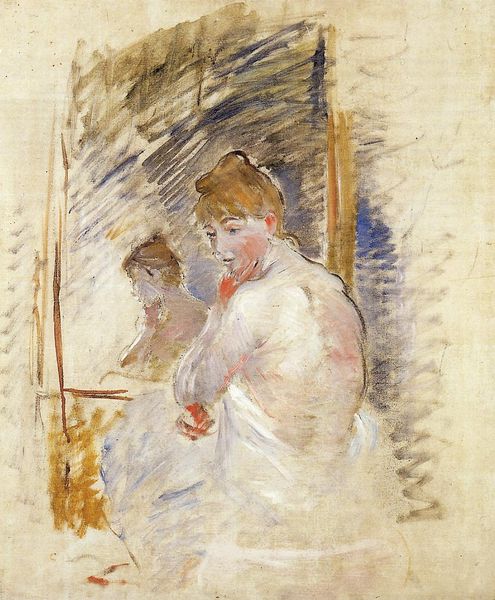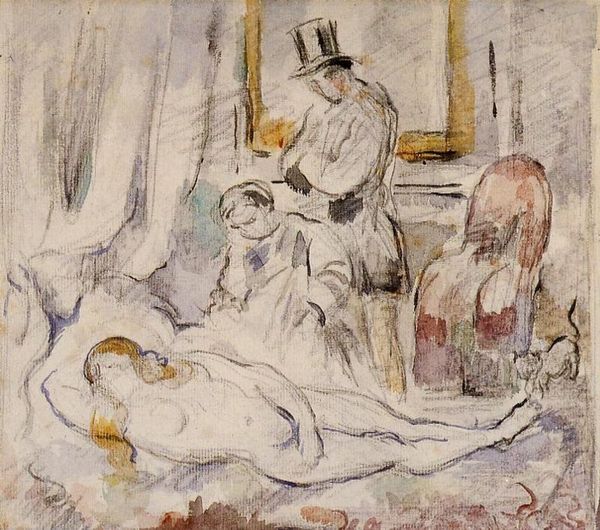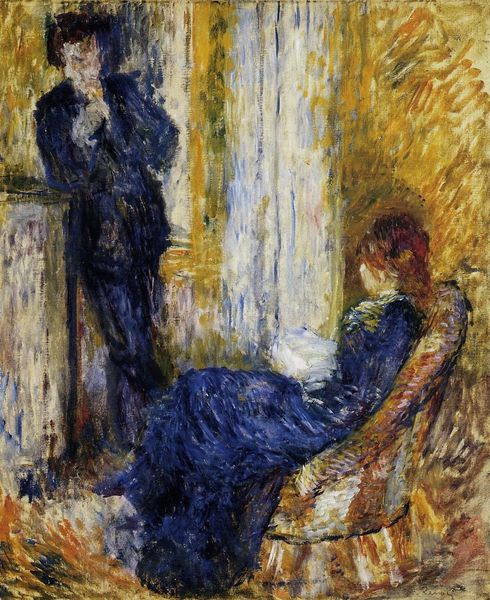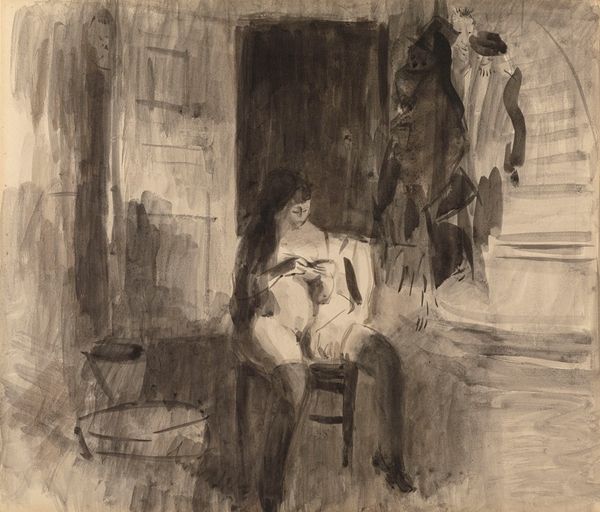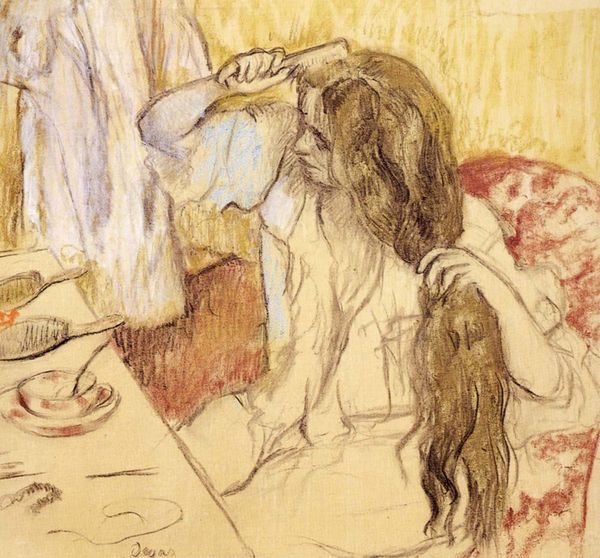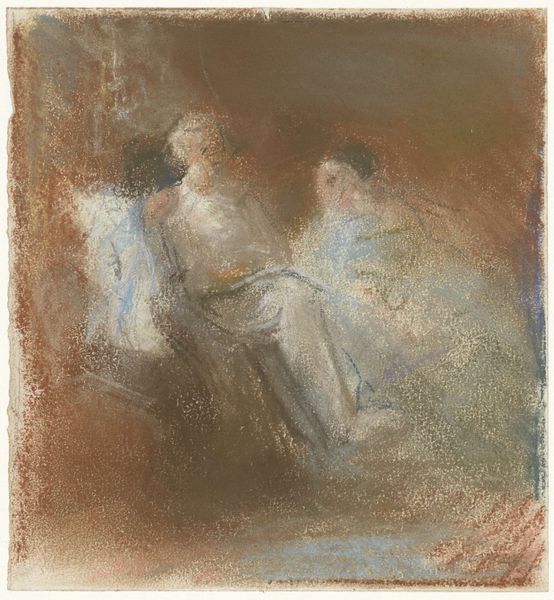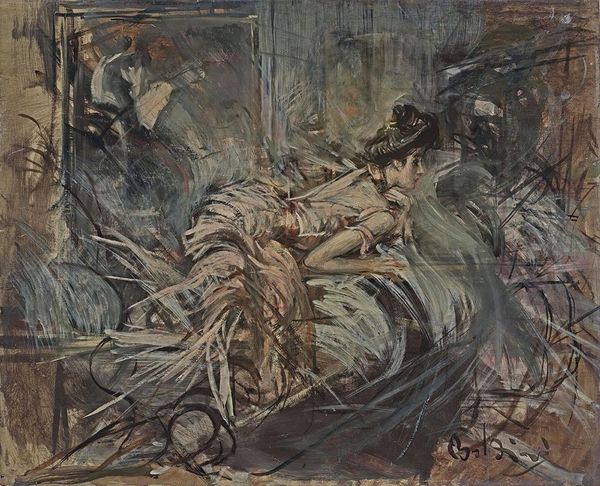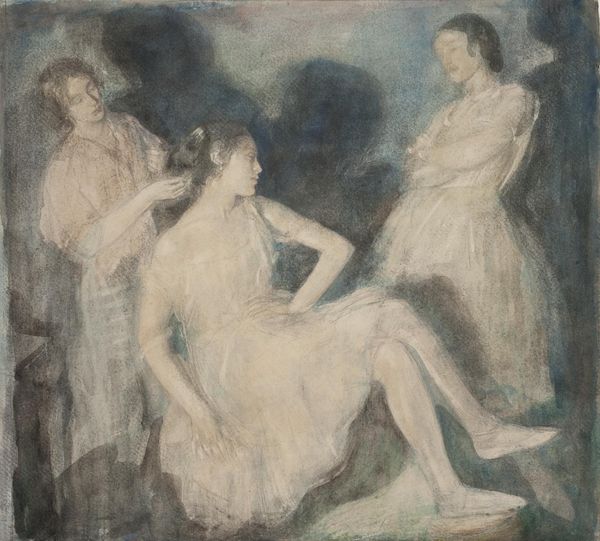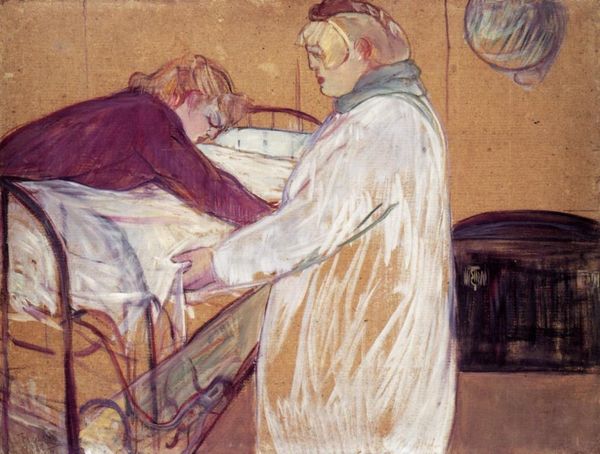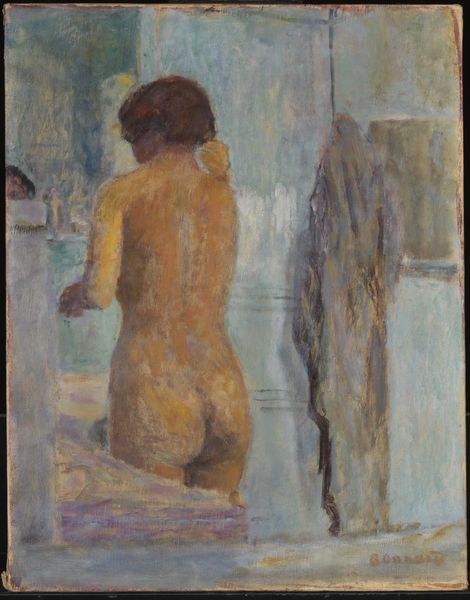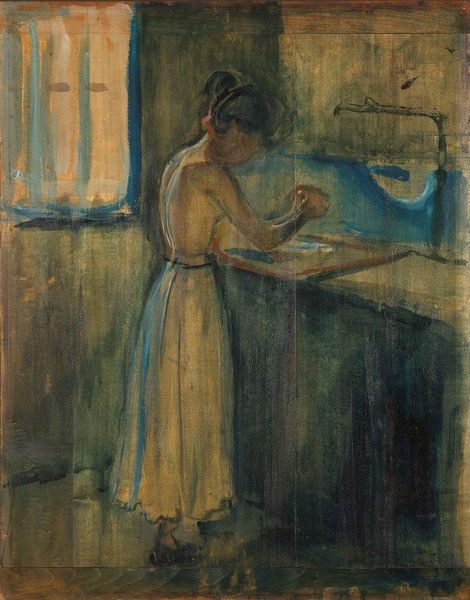
Copyright: Public domain
Henri de Toulouse-Lautrec created this sketch of dancers backstage, using diluted oil paint on cardboard. It offers a glimpse into the world of the Parisian ballet, but from an unusual perspective. It’s less about the glamour of performance, and more about the mundane reality of the dancer’s existence. Painted in France, during the late 19th century, this sketch reflects a changing attitude towards art, and the institutions which governed it, such as the Salon system. Artists like Lautrec moved away from depicting grand historical narratives and towards representing everyday life. We see it in his choice of subject, his focus on the informal, and his interest in the working classes. There are no grand statements here. To understand more, one might look at period documents, such as letters from dancers, theatre programmes and ticket sales, or even police records, to discover more about the place of the Moulin Rouge in Parisian society, as a place of spectacle but also sexual exploitation. Such resources help us interpret this artwork as a social document as much as an aesthetic one.
Comments
No comments
Be the first to comment and join the conversation on the ultimate creative platform.
